Forgiveness, messy and ambiguous, encourages an expansive moral imagination. To understand it, turn to literature... amen »
(12) The Poetry of Ernest Hilbert - by Micah Mattix - Prufrock
One of the things I appreciate about Hilbert is the understated realism of his work. He tries to capture—without theatrics or moralizing—what it feels like to live in the contemporary world. In fact, realism is a kind of ethic for him. His work is, in many ways, about facing the suffering and cruelty of life with honesty and courage.
Blurbs !
In Esquire Sophie Vershbow digs, quite deep, into: 'A Plague on the Industry': Book Publishing's Broken Blurb System.
Apparently:
Blurbs expose this ecosystem for what it really is: a nepotism-filled system that everyone endures for a chance of “making it” in an impossible industry for most.And:
“Blurbs aren't about the blurb; they're about opening the value exchange,” explained Jonathan Jacobs, a marketing strategist who has worked with several bestselling authors. “You blurb my book, I blurb yours. We do a Live together. We hit our email lists. It opens up the opportunity to continuously tap into someone else's audience.”'Opening the value exchange' .... shoot me now.
(For what it's worth: I read the blurbs -- critically, I like to think -- and, yes, they play some role in the larger package, of whether or not I'll take a closer look at a book. And, yes, I've been suckered more often than not -- predictively, I suspect they're about as reliable as if I let myself be influenced by the color of the cover of a book. But they're something, so what's one to do ?)
They started modelling for brands, and became the biggest brands of all
A new four-part Apple TV series is a remarkable study of four of the most well-known women of the 90s, and how powerful – and bankable – they became.
The last series Larissa Bills worked on before co-directing The Super Models wasOn Pointe, a six-part look inside the School of American Ballet. The parallels between the young ballet students clamouring for a part at the prestigious institution and the four models who became recognisable by their first names alone worldwide are clear, says Bills.
“Being a model, especially at the level these women were, was really intense,” says Bills over the phone from New York, where she lives. “The physicality, the attention to detail, the ability to show clothes: it’s not easy. These women just had it.”
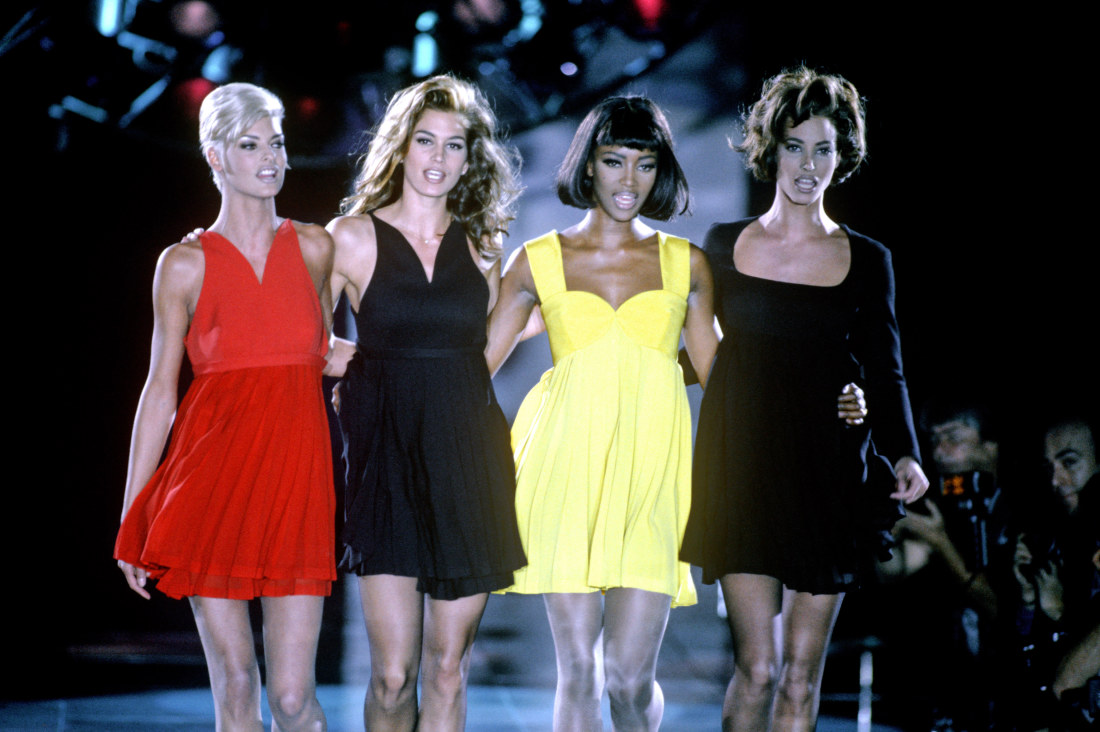
Linda Evangelista, Cindy Crawford, Naomi Campbell and Christy Turlington on the runway at Gianni Versace’s autumn 1991 show. Apple TV+
These women – Cindy, Christy, Naomi and Linda (do you really need their surnames?) – certainly did have it.
As the 1980s rolled into the 1990s, they were not merely avatars in the way their predecessors had been, but bankable identities – women who fronted major advertising campaigns, whose faces seemed ever-present on magazine covers (between them, the four have appeared on 43 US Vogue covers alone), who were household names and business powerhouses in their own right.
Bills and her co-director, Roger Ross Williams, were tasked with bringing all of this to light in The Super Models, Apple TV’s new four-part documentary premiering on September 20.
“We felt it was very important to meet the models one-on-one to get a sense of who they are as people,” says Bills. “We know them largely as images, and we needed to know them as humans.”
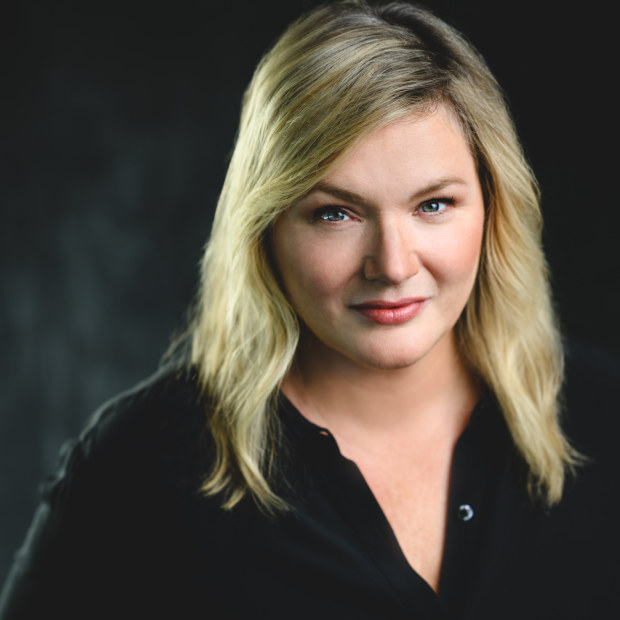
The documentary series presents its subjects in “all their humanity”, says co-director Larissa Bills. Apple TV+
Humans who, as the documentary shows, were really just kids at the beginning of their careers.
“I was surprised by how young they were,” says Bills, “and what an incredible responsibility was put on them at such a young age.”
As Cindy Crawford – scouted while riding her horse at 14 – notes in the series: “We looked powerful, we acted powerful, we became powerful.”
It’s expectations like these, Bills says, that made her think again and again of the pressure placed on young ballerinas, and the similarity to the modelling industry. “These are really just kids, thrust into this very adult world. That was illuminating for me, and [it’s] amazing to see the women they have become despite that enormous pressure.”
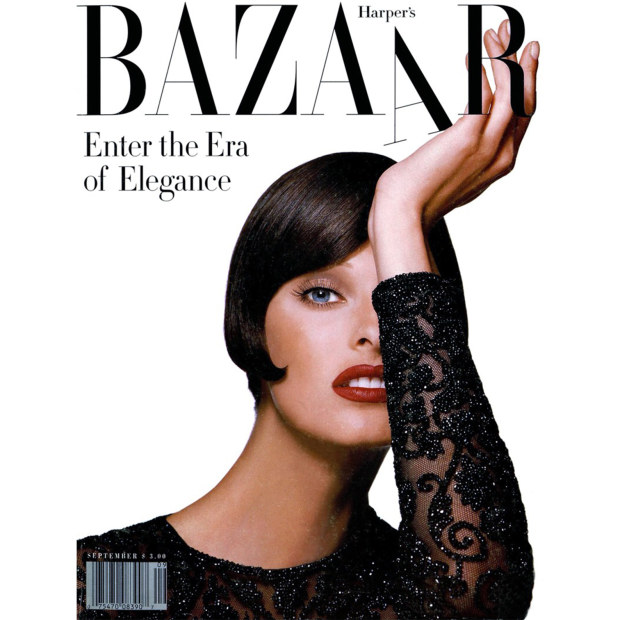
The September 1992 cover that caught co-director Larissa Bills’ eye.
Bills was approached to co-direct with Williams on the project, announced in 2020, by Ron Howard and Brian Grazer of Imagine Entertainment. Obsessed as she was with photography and fashion, she paired well with Williams, whose passion is the pop culture of the 1990s.
“I remember buying the first Harper’s Bazaarwith Linda Evangelista on the cover [the edition of September 1992], and everything about it was perfection in my eyes,” she says. “Cindy was on my brother’s wall for as long as I can remember; to see her come to life was surreal.
“Christy is like a girlfriend, so lovely and down to earth. Naomi is a goddess, one of the most incredible people I’ve ever been in a room with. The way that people react to her is like nothing I’ve ever seen before.”
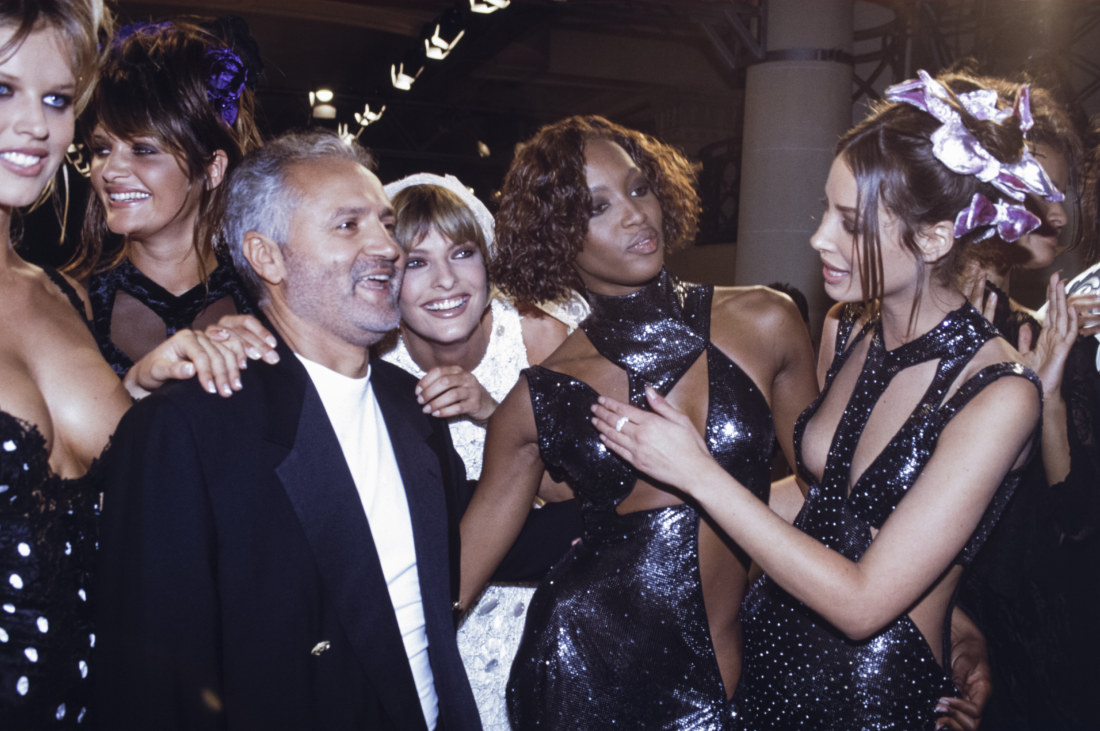
Gianni Versace surrounded by models Eva Herzigová, Helena Christensen, Linda Evangelista, Naomi Campbell and Christy Turlington during his haute couture show in Paris in 1993. Getty
As individuals, these women were powerful; as a collective, they were unstoppable. Truly: in the series, the models discuss the time they banded together to ensure that when Cindy Crawford, Christy Turlington Burns and Linda Evangelista were hired, Naomi Campbell would be hired, too.
COVID-19 naturally interrupted the filming of the documentary, but “the hardest thing was scheduling”, says Bills. “I learnt how fast fashion moves. There seems to always be a fashion week happening. And it wasn’t just with the models, it was the designers, photographers and stylists too. I’ve done filming in the Himalayas, the White House – this was harder to plan.
“Fashion is so much about relationships,” she says. “You have to engage with people on their turf – you have to be in Paris and Milan.”
And you have to be quick. “We had been planning Naomi’s interview for months and then suddenly it was like, OK, this is happening in London next week. Get on a plane.”
The series explores not just the rise of the four models and their star wattage but also their legacy. What was it, exactly, that made it possible for these women to become the celebrities they were?
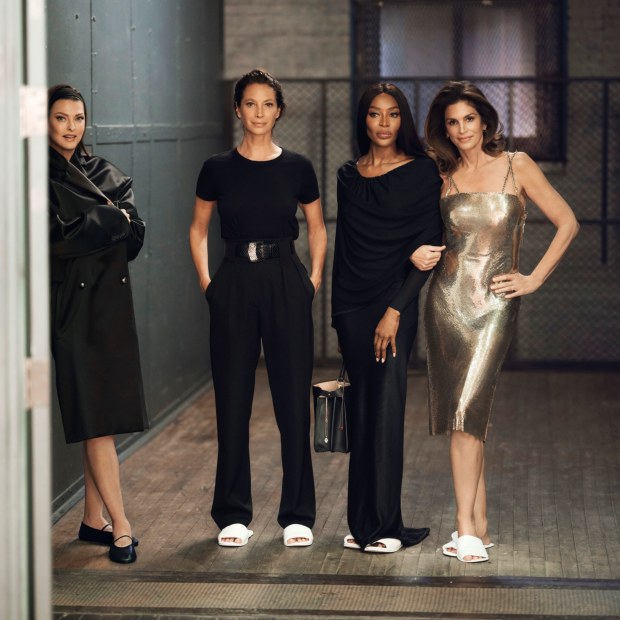
Linda, Christy, Naomi and Cindy now. Apple TV+
Bills, having spent dozens of hours with the models, thinks it was a matter of timing.
“The stars aligned in terms of where we were in the culture,” she says. “There was this leftover sense of excess from the ’80s, and then going into the ’90s, everything was so media-driven.” Models had, of course, broken through before, but not in this way, she notes.
“I think it was a matter of celebrities generally becoming more a part of our world, and a rethinking of feminism. There was a sense in the 1990s that feminists could wear heels, they could revel in the fun of fashion as well as being strong. And the models were the avatars of that.”
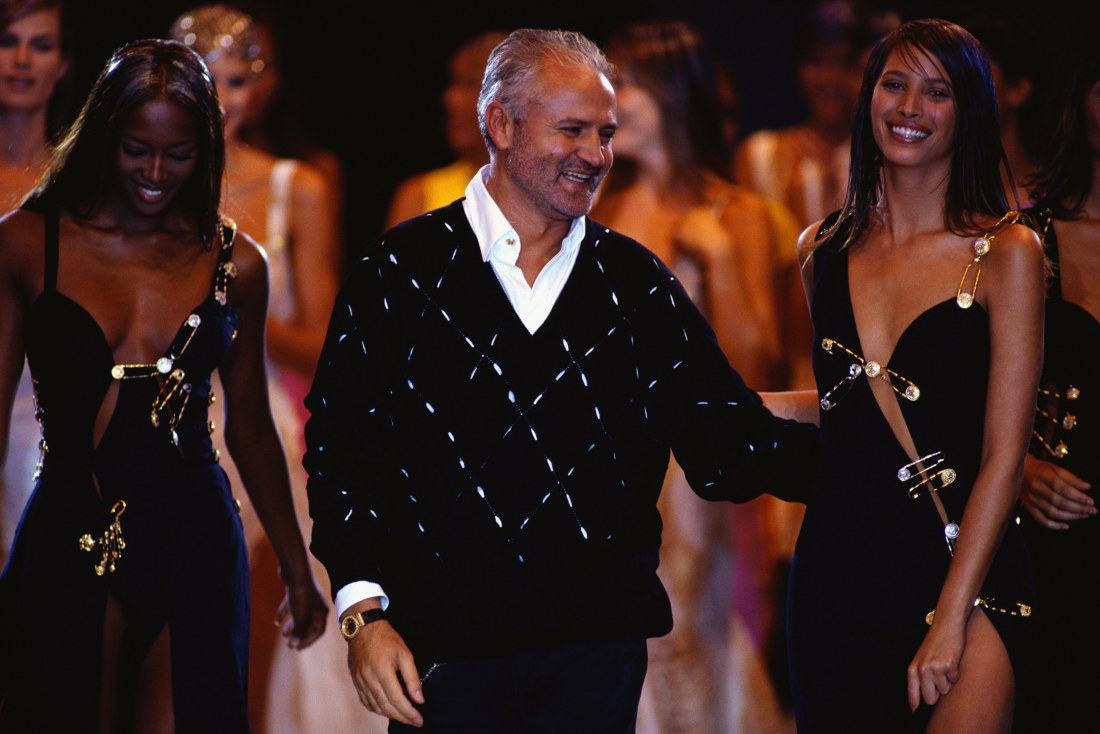
Naomi Campbell and Christy Turlington in Gianni Versace’s iconic safety pin dress in 1994. Getty
The series looks at body image, and the way the rise of the four impacted on conversations about bodies at the time. It’s something Bills was “certainly conscious of” when directing.
“There was a shift in the 1990s where you had these duelling feminist ideas: Are you barefoot burning your bra, or are you wearing high heels, owning the runway? And can those things coexist? We did look at these ideas.”
As with the ballet series, Bills was struck by the athleticism the models brought to their roles. “These women didn’t necessarily choose what they looked like,” she says. “And like athletes with natural ability, they worked hard at their jobs.” She pauses. “Nobody questions that of athletes.”
With the media landscape now so much more fractured, Bills is unsure if a similar documentary could be made in 30 years about today’s modelling industry. “In this digital age, will those images last as long?” she wonders. “I think about those classic Richard Avedon or Patrick Demarchelier images – they live in the photography pantheon. Will one of the Hadids live in that pantheon? Will Kendall Jenner? It remains to be seen.”
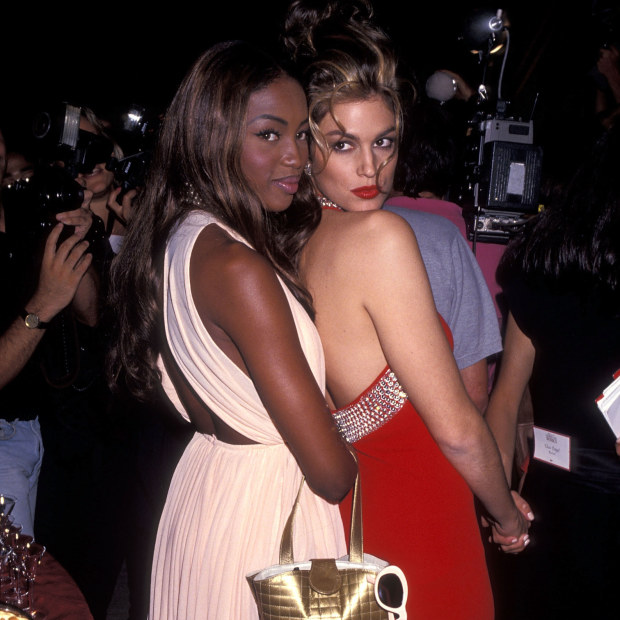
Naomi and Cindy at Revlon’s Unforgettable Women Contest in New York in 1991. Getty
But, she adds, the industry has also changed in positive ways. “It is much more diverse in terms of size, ethnicity, everything really, and I’m happy about the widening of that realm.”
Ultimately, she says, The Super Models presents its subjects in “all their humanity”.
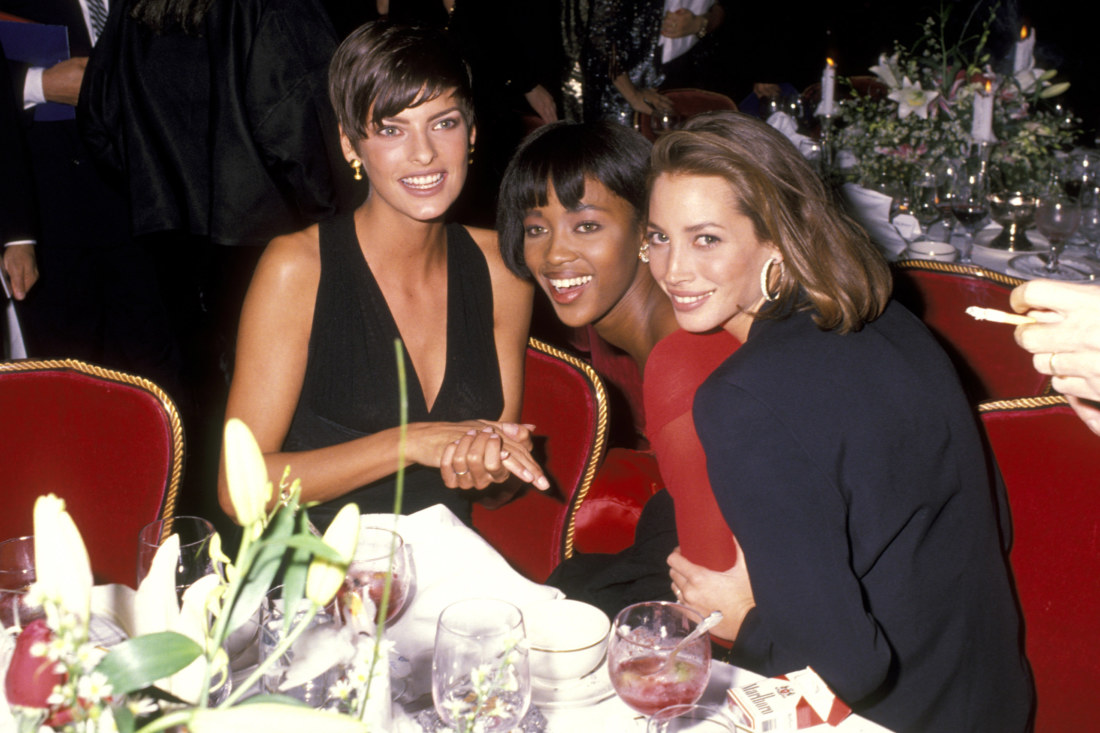
Linda Evangelista, Naomi Campbell and Christy Turlington attend Night of 100 Stars Gala at New York’s Plaza Hotel in 1989. Getty
“They are not just two-dimensional figures or mannequins in clothing. They are women who have broken barriers and set standards and done some amazing philanthropic work as well.”
But equally, it explores the wonder of beauty for beauty’s sake. “Some people might scoff at that, but I think beauty for beauty’s sake is an amazing thing,” Bills says. “People have been painting and sculpting beautiful women throughout history. These happen to be the most beautiful women of their era. Something about the way they presented to the world fascinated us.”
As it does still.
The four-part documentary series The Super Models premieres on September 20 on Apple TV+.
